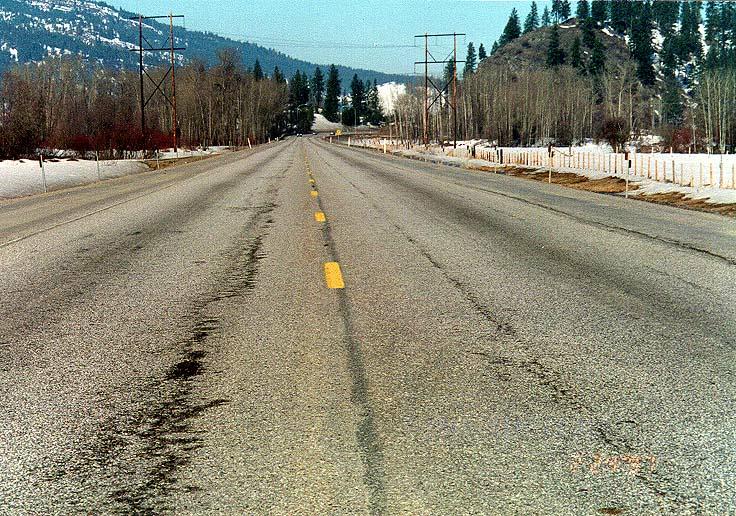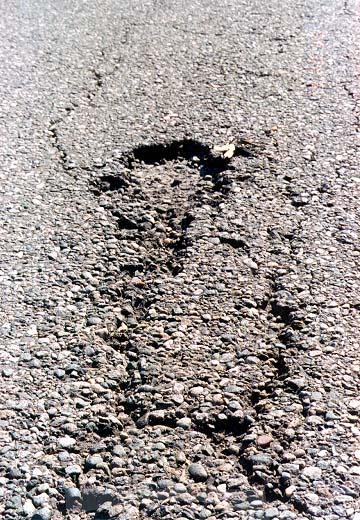Raveling – Pavement Interactive (original) (raw)
Description
The progressive disintegration of an HMA layer from the surface downward as a result of the dislodgement of aggregate particles.
 Figure 1: Raveling due to low density. Figure 1: Raveling due to low density. |
 Figure 2: Raveling from snowplow operations. Figure 2: Raveling from snowplow operations. |
 Figure 3: Raveling caused by segregation. Figure 3: Raveling caused by segregation. |
|---|
Problem
Loose debris on the pavement, roughness, water collecting in the raveled locations resulting in vehicle hydroplaning, loss of skid resistance
Possible Causes
Several including:
- Loss of bond between aggregate particles and the asphalt binder as a result of:
- A dust coating on the aggregate particles that forces the asphalt binder to bond with the dust rather than the aggregate
- Aggregate Segregation. If fine particles are missing from the aggregate matrix, then the asphalt binder is only able to bind the remaining coarse particles at their relatively few contact points.
- Inadequate compaction during construction. High density is required to develop sufficient cohesion within the HMA. The third figure above shows a road suffering from raveling due to inadequate compaction caused by cold weather paving.
- Mechanical dislodging by certain types of traffic (studded tires, snowplow blades or tracked vehicles). The first and fourth figures above show raveling most likely caused by snow plows.
Repair
A raveled pavement should be investigated to determine the root cause of failure. Repair strategies generally fall into one of two categories: